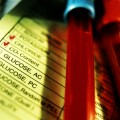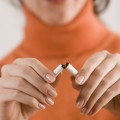Juvenile Diabetes
While the Juvenile Diabetes Research Foundation’s (JDRF) mission is to find a cure for juvenile (type 1) diabetes and its complications, the needs of people with diabetes have always been our guiding force. Until there is a cure, we at JDRF will provide basic information to help families and individuals caring for children with diabetes to cope with the burdens of the disease, and take advantage of help that is available right now.
WHAT IS JUVENILE DIABETES?
In juvenile diabetes, a person’s pancreas produces little or no insulin, a hormone the body needs in order to survive. In a healthy person, glucose—a form of sugar produced when food is digested—is burned as fuel to supply the body with energy. To turn food into energy, the body needs insulin, which allows glucose to move from the blood into the body’s cells to be used for energy. In people with juvenile diabetes, the body’s own immune system has attacked and destroyed the cells that produce insulin, causing dangerously high levels of blood glucose. As a result, insulin must be obtained from another source—through injections or an insulin pump.
Juvenile diabetes can occur at any age, but usually is diagnosed before 30. Although scientists do not know exactly why the body attacks and destroys its cells to cause juvenile diabetes, we do know it is not caused by being overweight or by eating too much sugar, which are two common myths. Every day, people with juvenile diabetes must check their blood glucose levels often, inject insulin and balance their diets with exercise and the amount of insulin they take.
LIFE WITH DIABETES
Thanks to advances in medicine and technology, managing diabetes is much easier than it used to be. The key goals are to keep blood glucose levels as close to the normal range (70-110 mg/dL before eating) as possible. Your health care provider or diabetes educator will recommend a target blood glucose range. The target range will be based on several factors, including age. The target range is a goal, one that may not always be reached despite one’s best efforts.
The quick rule is: food makes blood glucose levels rise; exercise and insulin make blood glucose levels fall. Checking blood glucose is the tool for managing rising and falling blood sugar levels.
While diabetes control is a constant balancing act combining insulin, food and exercise—other factors, such as stress, growth spurts and illness also affect blood glucose levels. If the balance is thrown off, there is the danger that either of two diabetic emergencies, hypoglycemia (low blood glucose) or hyperglycemia (high blood glucose) could take place.
These emergencies can occur with little or no warning, so it is important to always be prepared. The people most often around someone with diabetes (teachers, coaches, friends, relatives and co-workers) should be educated about how to react to such a situation. People with diabetes also should carry or wear a form of medical identification that lets others know they have diabetes, what medications they are taking and the names of their doctors.
JDRF Resources
If you or your child has juvenile diabetes, please know that you are not alone. JDRF can help you. Please call us. Information about the resources offered by JDRF, such as how to find your local chapter, volunteer opportunities, and the latest news on research for a cure, can be found by calling (800) 533-CURE or on the Web at www.jdrf.org










